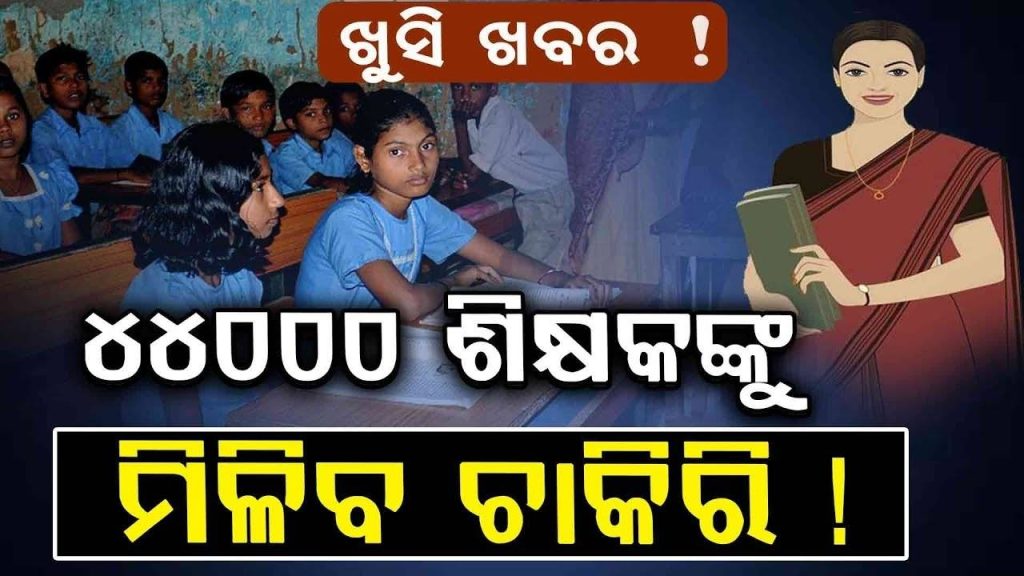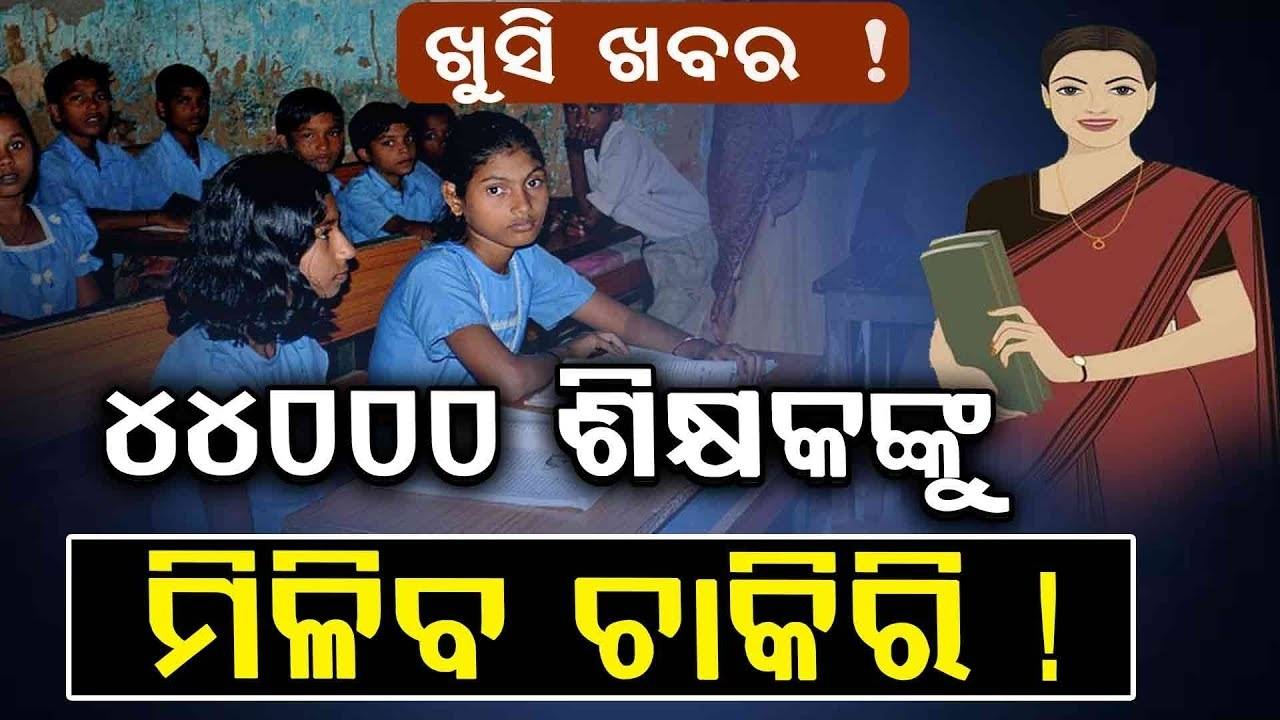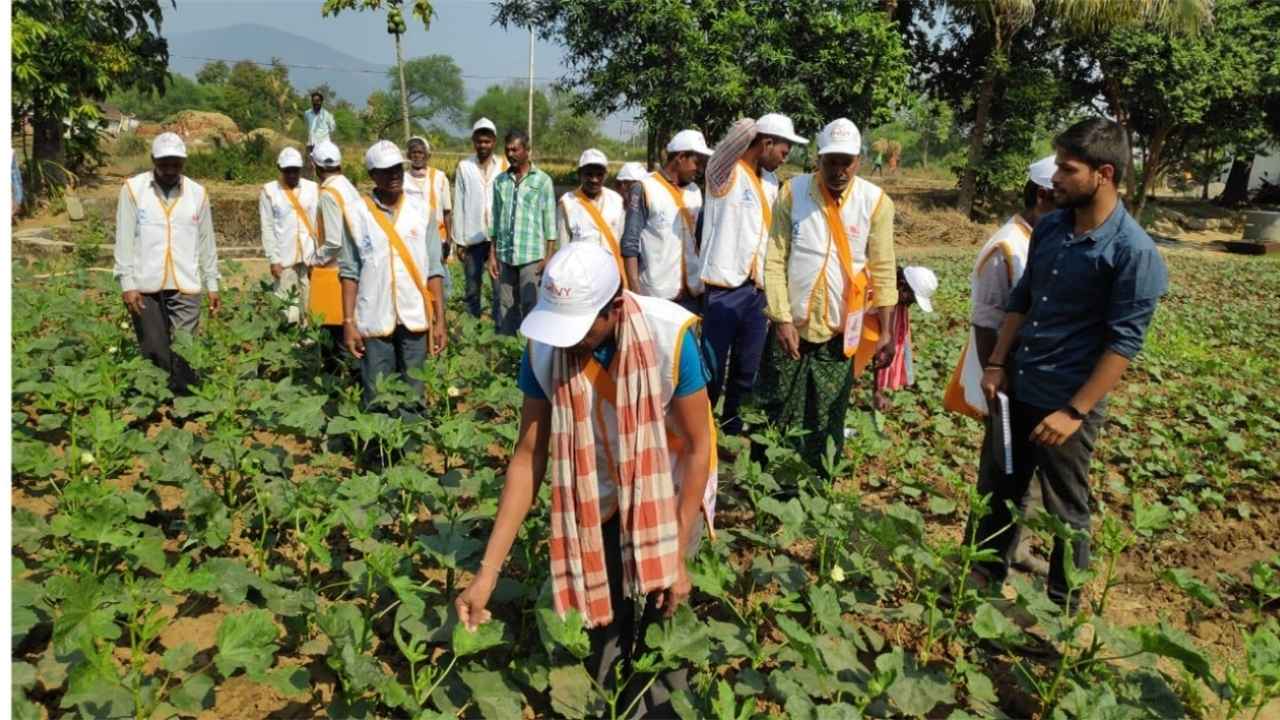The government of Odisha announced a major initiative to address a long-standing teacher shortage, with Chief Minister Mohan Charan Majhi confirming plans to recruit more than 44,000 primary school teachers over the next three years. The decision, part of a broader educational reform package, aims to improve the quality of foundational education and align the state’s schools with the goals of India’s National Education Policy 2020. This move marks one of the largest single-state teacher recruitment drives in recent Indian history.

The Need for Teacher Recruitment
India has been grappling with a significant shortage of qualified teachers, particularly in rural and underserved areas. According to data from the Ministry of Education, the country has over 1.5 million teaching vacancies, which has a direct impact on the pupil-teacher ratio (PTR) and, consequently, on learning outcomes. The National Education Policy (NEP) 2020 mandates a PTR of 30:1 at the primary level, but many states, including Odisha, have struggled to meet this benchmark. The new recruitment drive is a direct response to this gap.
Speaking at a recent review meeting of the School and Mass Education Department, Majhi emphasized the critical role of early education. “Primary education will be the foundation of a prosperous Odisha by 2036,” he stated, according to a press release from the Chief Minister’s Office. The announcement includes the creation of approximately 40,000 new teaching positions, with the remaining vacancies to be filled from existing, unfilled posts. The plan is to appoint around 15,000 teachers each year to ensure a steady flow of qualified educators into the system.
The recruitment drive comes amid a wider push to improve the state’s educational landscape. A 2024 report published in the journal Indian Journal of Clinical Research and Trials highlighted how teacher shortages in many parts of India lead to overburdened educators, large class sizes, and poor learning outcomes. The report noted that in many schools, a single teacher is responsible for multiple grades and subjects, making it difficult to provide personalized attention to students. Odisha’s initiative directly targets these systemic issues.

Key Elements of the Reform
Beyond the mass recruitment, the Odisha government’s announcement includes several other key reforms aimed at modernizing the education system. These measures were formulated in line with the National Education Policy 2020 and are intended to be part of a holistic approach to educational development.
1. Regularization of Ad Hoc Teachers: The government has decided to regularize the services of ad hoc or “schematic” teachers currently working in primary schools. This move is expected to provide job security and better working conditions, which could improve teacher retention and morale. Many ad hoc teachers have worked for years without the benefits of permanent employment, and this decision addresses a long-standing demand from the teaching community.
2. Free Textbooks for All: The government’s existing scheme of providing free textbooks will be extended to cover all students up to Class 10. Previously, this benefit was limited to students in Classes 1 through 8, with an extension to Scheduled Caste and Scheduled Tribe students in Classes 9 and 10. The expansion of this program aims to reduce financial barriers for families and ensure every student has access to essential learning materials.
3. Formation of a Single School Board: To streamline educational governance, the state plans to merge the Board of Secondary Education (BSE) and the Council of Higher Secondary Education (CHSE) into a single, unified board. Proponents of the move argue it will create uniformity in standards and administration, making the system more efficient. This is a significant administrative reform that could simplify processes for schools, teachers, and students.
4. Focus on Tribal and Differently-Abled Students: The government has committed to emphasizing education in the mother tongue for tribal students, with plans to establish a multilingual education center in Koraput in collaboration with the Scheduled Castes and Scheduled Tribes Research and Training Institute (SCSTRTI). Additionally, trained B.Ed. teachers will be appointed as resource persons for the education of differently-abled children in various clusters.
Challenges and Future Outlook
While the announcement has been widely welcomed, its successful implementation will depend on addressing a number of logistical and financial challenges. The sheer scale of recruiting over 44,000 individuals requires a robust and transparent process to ensure that only qualified candidates are selected. The state’s School and Mass Education Department and other relevant bodies will be responsible for managing the recruitment cycles, which have been plagued by administrative delays in the past.
House Help’s Son in Odisha Triumphs in NEET, Fulfilling a Dream of a Lifetime
Protests Escalate at Berhampur University: Gopalpur Police Station Gheraoed by Students
Odisha to Strengthen Tribal Health Sector with Recruitment of 1,840 Medical Officers
The financial commitment required for the salaries, benefits, and training of such a large new workforce is substantial. A senior education official, who requested anonymity, noted that while the state has allocated the necessary funds, sustained funding over the next three years will be crucial. “This is not just about filling vacancies,” the official said. “It’s about a long-term investment in our human capital. The real challenge will be to ensure these new teachers receive continuous professional development and support.”
The move to regularize ad hoc teachers is seen as a positive step toward ensuring a more motivated and stable teaching workforce. However, the process must be handled carefully to avoid disputes and ensure a fair and equitable transition for all eligible educators.
The reforms align with national efforts to enhance foundational learning and improve literacy and numeracy rates across the country. By making a concerted effort to fill these critical vacancies, Odisha is positioning itself as a leader in state-level educational reform. The success of this initiative could serve as a model for other Indian states facing similar demographic and educational challenges.
The last major recruitment drive for primary-level education saw thousands of teachers appointed, but a significant number of vacancies have remained unfilled. The new plan aims to be more comprehensive by creating new posts and regularly filling them over a multi-year period. It is a strategic effort to build a stronger educational framework for the next generation of students in the state.





